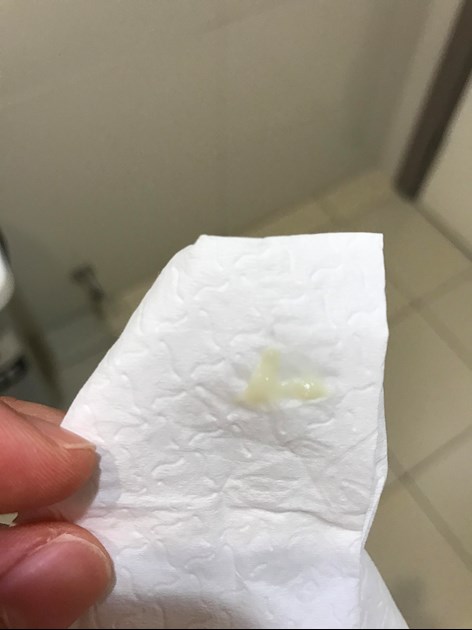Black line in pregnancy
What to Know About the Pregnant Belly Line
Pregnancy can come with some unusual body changes, like hair in places you didn’t expect, sudden indigestion, hemorrhoids and acne breakouts. But here is a lesser-known surprise to add to the growing list of pregnancy pleasantries: Linea nigra. This dark line that can develop down the center of your bump may catch you off guard. So what is linea nigra, when does it appear and what can you do—if anything—to make it go away? Here’s what you need to know about the pregnancy line on your stomach.
In this article:
What is linea nigra?
What causes linea nigra?
When does linea nigra appear?
What is the purpose of linea nigra
When does linea nigra go away?
What Is Linea Nigra?
Linea nigra, which is Latin for “black line,” is a streak running from your belly button to your pubic region that may develop and darken during pregnancy, according to the American College of Obstetricians and Gynecologists (ACOG). The length, width and color of this pregnant belly line varies from person to person.
Image: Getty Images (2)
Its appearance might make you do a double take, but it’s nothing to be concerned about. “Linea nigra is simply the increase in pigmentation of the skin,” says Julie Lamppa, APRN, a certified nurse-midwife at the Mayo Clinic and the author of Obstetricks. “Linea nigra can look slightly different on everyone,” and it may be more obvious if you have darker skin, says Christine Greves, MD, a board-certified ob-gyn at the Winnie Palmer Hospital for Women & Babies. People with darker skin have more melanocytes, which are pigment-producing cells, making them more prone to getting this line, explains Michael Cackovic, MD, a maternal-fetal medicine physician at the Ohio State University Wexner Medical Center.
It’s important to emphasize that this dark line on your stomach isn’t something that will impact you or baby. “Pregnant women can be reassured that linea nigra isn’t harmful and has no adverse effect on pregnancy outcomes or the baby,” says Jessica Shepherd, MD, an ob-gyn and founder of Sanctum Med + Wellness in Dallas, Texas.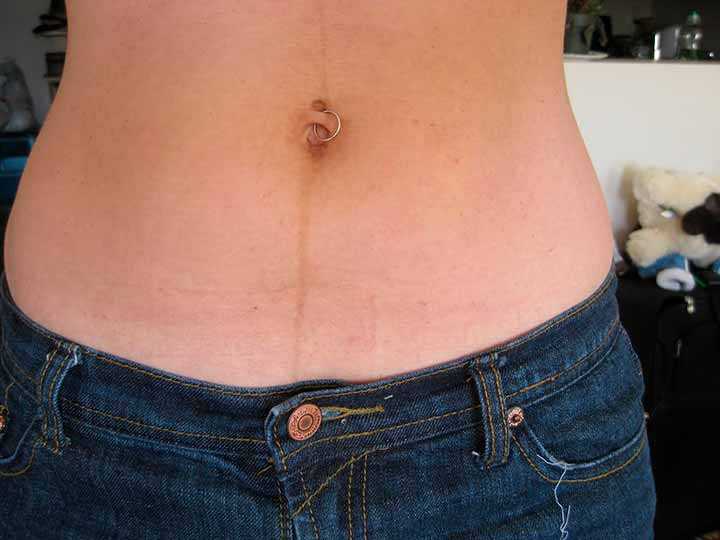 It’s just one of those things that you may (or may not) have to deal with for a while.
It’s just one of those things that you may (or may not) have to deal with for a while.
Does everyone get linea nigra?
While the linea nigra line is common, not every mom-to-be will get it. In fact, there’s no way to tell in advance if this is something you’ll develop during pregnancy. “We don’t know why some people get it and others don’t,” Greves says. Of course, having more pigment-producing cells may make you more prone to it, but it’s certainly not a guarantee. If you have linea nigra once, you’re probably going to have it in subsequent pregnancies too.
What Causes Linea Nigra?
Linea nigra is just one of the many skin changes that can happen during pregnancy. “Almost all pregnant women develop some type of hyperpigmentation in their skin in certain areas,” Cackovic says. For example, many pregnant women notice their areolas darkening or experience dark patches of skin that appear on the face, known as melasma. These melanocytes are likely stimulated by hormones like estrogen and progesterone, which surge in your body during pregnancy, Greves explains.
Unfortunately, there’s no definitive known way to avoid linea nigra. While you might not love the look of it, the important thing to remember is that it’s totally normal.
When Does Linea Nigra Appear?
This signature belly line can technically show up at any point in your pregnancy, but it will typically surface sometime in the second or third trimester, Lamppa says. Again, not everyone gets linea nigra. Either way, it’s no cause for stress.
What Is the Purpose of Linea Nigra?
While some physical changes that happen in pregnancy, like your breasts growing, have a biological purpose, experts say there’s no clear reason why your body would need to develop linea nigra. You can file this one under the many mysteries of pregnancy. “There’s no biological purpose for this,” Greves says.
Sorry to spoil your fun, but if you’ve heard an old wives’ tale that the length of your pregnant belly line will determine whether you’re having a boy or a girl, we’re here to debunk that myth.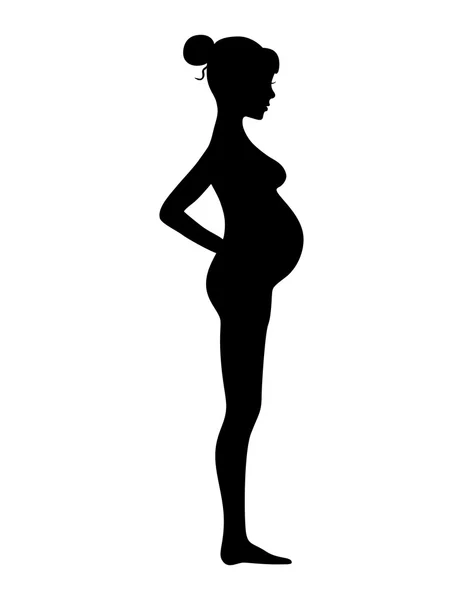 (It specifically claims that if the linea nigra starts below your belly button, you’re carrying a girl; if it extends above your navel, you’re supposedly having a boy.) While this is a fun guessing game to test out, Greves stresses that it’s not a legitimate way to determine baby’s sex.
(It specifically claims that if the linea nigra starts below your belly button, you’re carrying a girl; if it extends above your navel, you’re supposedly having a boy.) While this is a fun guessing game to test out, Greves stresses that it’s not a legitimate way to determine baby’s sex.
When Does Linea Nigra Go Away?
If you’re wondering when the linea nigra will go away, you’ll have to be patient. There’s no clear-cut answer: The truth is, it depends. But in all likelihood, you’ll probably notice some changes in your skin soon after baby is born. “As hormonal levels start to decrease and stabilize, linea nigra should start to fade in the weeks and months after birth,” Lamppa says. Still, Cackovic adds that it can take up to a year or longer for linea nigra to fade in some people. What’s more, for others, this pregnancy line may never completely go away.
There are really no at-home remedies you can use to get rid of linea nigra during or after pregnancy. If it continues to linger after baby is born, consider seeing a dermatologist.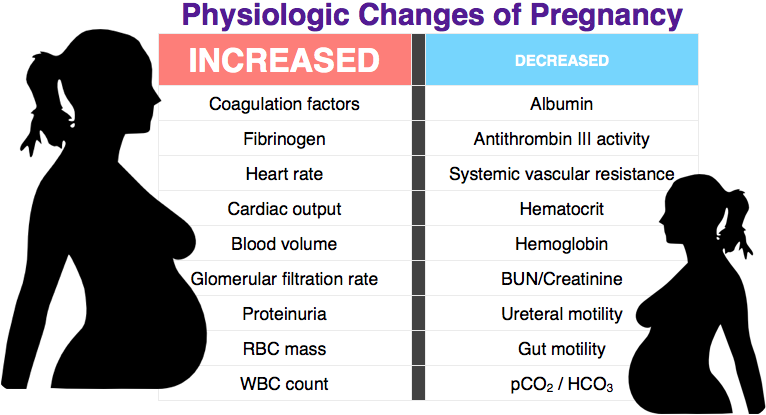 Cackovic says they may recommend skin-lightening agents, chemical peels or laser and light therapies to try to get the line to fade. Another tip? Use a good SPF when your stomach is exposed. The sun’s UV rays can exacerbate patches of hyperpigmentation.
Cackovic says they may recommend skin-lightening agents, chemical peels or laser and light therapies to try to get the line to fade. Another tip? Use a good SPF when your stomach is exposed. The sun’s UV rays can exacerbate patches of hyperpigmentation.
You may not be thrilled with the look of your pregnant belly line, but try not to focus on it, and be patient. “Remember that your body has amazingly grown a baby, and your body will never quite be the same—and that’s okay,” Lamppa says. The linea nigra is proof that you can do amazing things.
About the experts:
Michael Cackovic, MD, is a maternal-fetal medicine physician at the Ohio State University Wexner Medical Center. He received his medical degree at the MCP Hahnemann University College of Medicine.
Christine Greves, MD, is an ob-gyn at the Winnie Palmer Hospital for Women & Babies in Orlando, Florida. She received her medical degree from the University of South Florida.
Julie Lamppa, APRN, is a certified nurse-midwife at the Mayo Clinic and the author of Obstetricks. She earned her degree at the University of Minnesota Medical School in Minneapolis.
Jessica Shepherd, MD, is an ob-gyn and founder of Sanctum Med + Wellness in Dallas, Texas. She received her medical degree from Ross University School of Medicine in Barbados.
Please note: The Bump and the materials and information it contains are not intended to, and do not constitute, medical or other health advice or diagnosis and should not be used as such. You should always consult with a qualified physician or health professional about your specific circumstances.
Plus, more from The Bump:
How Your Pregnant Belly Will Change During Each Trimester
10 Surprising Pregnancy Symptoms No One Warned You About
How Your Vaginal Discharge Can Change During Pregnancy
Linea Nigra: Should I Be Worried?
Linea Nigra: Should I Be Worried?- Health Conditions
- Featured
- Breast Cancer
- IBD
- Migraine
- Multiple Sclerosis (MS)
- Rheumatoid Arthritis
- Type 2 Diabetes
- Articles
- Acid Reflux
- ADHD
- Allergies
- Alzheimer's & Dementia
- Bipolar Disorder
- Cancer
- Crohn's Disease
- Chronic Pain
- Cold & Flu
- COPD
- Depression
- Fibromyalgia
- Heart Disease
- High Cholesterol
- HIV
- Hypertension
- IPF
- Osteoarthritis
- Psoriasis
- Skin Disorders and Care
- STDs
- Featured
- Discover
- Wellness Topics
- Nutrition
- Fitness
- Skin Care
- Sexual Health
- Women's Health
- Mental Well-Being
- Sleep
- Product Reviews
- Vitamins & Supplements
- Sleep
- Mental Health
- Nutrition
- At-Home Testing
- CBD
- Men’s Health
- Original Series
- Fresh Food Fast
- Diagnosis Diaries
- You’re Not Alone
- Present Tense
- Video Series
- Youth in Focus
- Healthy Harvest
- No More Silence
- Future of Health
- Wellness Topics
- Plan
- Health Challenges
- Mindful Eating
- Sugar Savvy
- Move Your Body
- Gut Health
- Mood Foods
- Align Your Spine
- Find Care
- Primary Care
- Mental Health
- OB-GYN
- Dermatologists
- Neurologists
- Cardiologists
- Orthopedists
- Lifestyle Quizzes
- Weight Management
- Am I Depressed? A Quiz for Teens
- Are You a Workaholic?
- How Well Do You Sleep?
- Tools & Resources
- Health News
- Find a Diet
- Find Healthy Snacks
- Drugs A-Z
- Health A-Z
- Health Challenges
- Connect
- Breast Cancer
- Inflammatory Bowel Disease
- Psoriatic Arthritis
- Migraine
- Multiple Sclerosis
- Psoriasis
Medically reviewed by Holly Ernst, PA-C — By Stephanie Watson on February 21, 2019
Overview
Pregnancy can do weird and wonderful things to your body. Your breasts and belly enlarge, your blood flow increases, and you begin to feel movements from deep inside.
Your breasts and belly enlarge, your blood flow increases, and you begin to feel movements from deep inside.
Around the middle of your pregnancy, you may notice another unusual change: a dark line running down the front of your abdomen. It’s called the linea nigra, and it’s no cause for alarm.
What causes linea nigra?
Your skin, like the rest of your body, goes through some changes during pregnancy. It stretches to accommodate your growing belly and breasts, and it may change color.
Most pregnant women notice darker patches of skin on their face, especially women who already have dark hair or skin. These patches of skin are called the “mask of pregnancy.”
You may also notice other areas of your body getting darker, like your nipples. If you have any scars, they might become more noticeable. Freckles and birthmarks may become more obvious, too.
These color changes happen because of the hormones estrogen and progesterone, which your body produces in larger amounts to help your baby develop.
Estrogen and progesterone stimulate cells called melanocytes in your skin, causing them to produce more melanin, the pigment that tans and darkens your skin. Increased melanin production is what makes your skin change color during pregnancy.
At some point during your second trimester, you may notice a dark brown line running down the middle of your abdomen, between your belly button and pubic area. This line is called the linea alba. You’ve always had it, but before your pregnancy it was too light to see.
When melanin production increases during pregnancy, the line gets darker and more obvious. Then it’s called the linea nigra.
Pictures
What should I do about linea nigra?
Linea nigra isn’t harmful to you or your baby, so you don’t need medical treatment.
Some people believe that the linea nigra could send a signal about your baby’s gender. They say that if it runs to your belly button, you’re having a girl, and if it keeps going all the way to your ribs you’re due for a boy. But there isn’t any science behind the theory.
But there isn’t any science behind the theory.
What happens to linea nigra after pregnancy?
Soon after your baby is born, the linea nigra should start to fade. In some women, though, it may never completely disappear. And if you get pregnant again, expect to see that line reappear.
If the line doesn’t go away after pregnancy and its appearance bothers you, ask your dermatologist about using a skin bleaching cream. That may help the line fade more quickly.
Don’t use a bleaching cream during your pregnancy or while you’re breastfeeding, because it can be harmful to your baby.
If the line really bothers you during pregnancy, try concealing the line with makeup until it fades.
Be sure to wear sunscreen whenever you expose your belly and other areas of your skin to the sun. Sun exposure can make the line even darker.
Takeaway
Linea nigra happens during pregnancy because your hormones trigger color changes in your skin. It’s not something to be worried about and usually fades after you give birth.
Last medically reviewed on February 22, 2019
- Parenthood
- Pregnancy
- Pregnancy Health
How we reviewed this article:
Healthline has strict sourcing guidelines and relies on peer-reviewed studies, academic research institutions, and medical associations. We avoid using tertiary references. You can learn more about how we ensure our content is accurate and current by reading our editorial policy.
- George AO, et al. (2005). The incidence of lower mid-trunk hyperpigmentation (linea nigra) is affected by sex hormone levels [Abstract].
ncbi.nlm.nih.gov/pubmed/15926645 - Massinde A, et al. (2011). Extensive hyperpigmentation during pregnancy: A case report. DOI:
10.1186/1752-1947-5-464 - Pregnancy line – linea nigra. (n.d.).
americanpregnancy.org/pregnancy-concerns/pregnancy-line-linea-nigra/ - Skin changes during pregnancy.
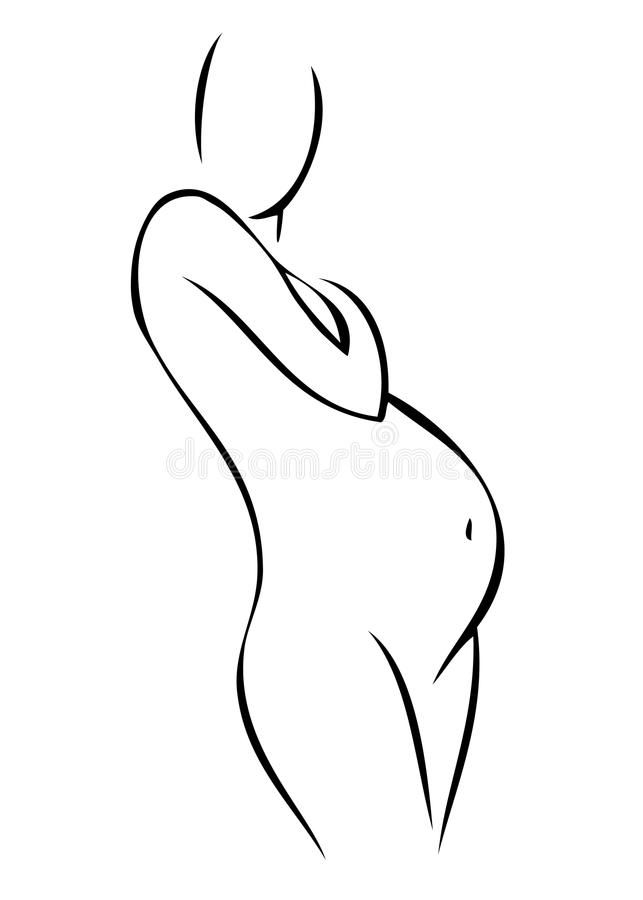 (2015).
(2015).
americanpregnancy.org/pregnancy-health/skin-changes-during-pregnancy/ - Vora RV, et al. (2014). Pregnancy and skin. DOI:
10.4103/2249-4863.148099
Our experts continually monitor the health and wellness space, and we update our articles when new information becomes available.
Share this article
Medically reviewed by Holly Ernst, PA-C — By Stephanie Watson on February 21, 2019
related stories
Is the ‘Hook Effect’ Messing Up My Home Pregnancy Test?
Molar Pregnancy: What You Need to Know
Dealing with Itchy Skin During Pregnancy
Your Guide to a Pregnancy-Safe Skin Care Routine
Can Ectopic Pregnancy Be Diagnosed With Ultrasound?
Read this next
Is the ‘Hook Effect’ Messing Up My Home Pregnancy Test?
Medically reviewed by Debra Sullivan, Ph.D., MSN, R.N., CNE, COI
Sometimes, you can be certain you're pregnant even when all the tests come back negative.
 Could this be the hook effect? We'll tell you what you need…
Could this be the hook effect? We'll tell you what you need…READ MORE
Molar Pregnancy: What You Need to Know
Medically reviewed by Carolyn Kay, M.D.
A molar pregnancy is one in which a healthy baby can't develop. Although easy to treat, this condition can be incredibly hard to face. We'll tell you…
READ MORE
Dealing with Itchy Skin During Pregnancy
Medically reviewed by Nicole Galan, RN
Pregnant women often experience itching, but the cause might not always be clear. Here’s a look at why, treatments, and when you should speak to your…
READ MORE
Your Guide to a Pregnancy-Safe Skin Care Routine
When you're expecting, pregnancy-safe skin care can help ensure the health of you and your baby. We'll tell you what to avoid — and some good…
READ MORE
Can Ectopic Pregnancy Be Diagnosed With Ultrasound?
Medically reviewed by Valinda Riggins Nwadike, MD, MPH
Ectopic pregnancy is a serious condition that requires accurate and swift diagnosis.
 Ultrasound for ectopic pregnancy diagnosis is just one tool your…
Ultrasound for ectopic pregnancy diagnosis is just one tool your…READ MORE
Is It Safe to Consume Flaxseeds During Pregnancy?
Given the inconclusive and conflicting stances about eating flaxseeds during pregnancy, it might be better to err on the side of caution.
READ MORE
Pregnancy After Miscarriage: Answers to Your Questions
Medically reviewed by Amanda Kallen, MD
Getting pregnant after a miscarriage can be an emotional experience, filled with joy but also anxiety and guilt. Learn more about pregnancy after…
READ MORE
What Is a Nurse Midwife and How to Tell If They Are Right for You
Medically reviewed by Meredith Wallis, MS, APRN, CNM, IBCLC
A nurse midwife is a nurse with education, training, and certification to provide prenatal, delivery, and women's care.

READ MORE
Your 6-Week Ultrasound: What to Expect
Medically reviewed by Valinda Riggins Nwadike, MD, MPH
We'll tell you all about the 6-week ultrasound, including why your doctor may have ordered it, what the risks are, and what it means if no heartbeat…
READ MORE
Does Swaddling Increase the Risk of SIDS?
Medically reviewed by Mia Armstrong, MD
Is swaddling safe, or is it a risk factor for SIDS? Here's what the most recent research says.
READ MORE
Why do women get a dark line on their belly during pregnancy?
Many expectant mothers notice that over time a dark vertical line appears on their stomach.
Some are so worried that they begin to get rid of it by any means, fearing that it will harm their health.
A dark vertical stripe on the abdomen (from Latin Linea nigra ) is one of the most common signs of pregnancy. This brownish line, usually about a centimeter wide, runs from the pubis to the navel, but sometimes it extends to the very top of the abdomen. nine0003
This brownish line, usually about a centimeter wide, runs from the pubis to the navel, but sometimes it extends to the very top of the abdomen. nine0003
This vertical streak appears in most pregnant women and becomes fully visible around the 23rd week of pregnancy.
Why does a streak form?
Skin color often changes during pregnancy, dark spots may appear in different parts of the skin. Like other changes, the appearance of a strip on the abdomen is caused by an increase in hormone levels during the second and third trimester. It gradually gets darker.
By the way, there is another stripe, but white or a white line of the abdomen ( linea alba ), which stretches from the navel to the pubis and is present in all people.
However, the brown streak only occurs during pregnancy.
The appearance of a dark line during pregnancy is due to an increase in hormones that affect melanocyte cells, which ultimately leads to the production of more melanin, the pigment on which our skin color depends, that is, this pigment is to blame for everything.
It also causes age spots on the body, darkens the nipples, the skin in the perineum. nine0003
When does the dark line appear?
Most pregnant women notice a dark line between the first and second trimesters. And for expectant mothers who are expecting twins or triplets, the strip becomes visible already in the middle of the first trimester.
However, not all pregnant women develop this line. Studies have shown that this phenomenon is characteristic of 75% of expectant mothers.
When will the dark line disappear?
Dark lines on the abdomen disappear gradually after a few weeks after childbirth. If a woman is breastfeeding, then the strip will last for several months. In general, it takes time for the dark pigment melanin to stop accumulating in the cells. nine0003
Can the strip be dangerous for mother or baby?
This pigment line cannot pose any danger to the child. The fetus is completely protected from external influences. The only problem is that the streak is more pronounced in women with dark skin. This is usually caused by hyperpigmentation. But there is nothing to worry about here either. She, though slowly, but also disappears after childbirth.
This is usually caused by hyperpigmentation. But there is nothing to worry about here either. She, though slowly, but also disappears after childbirth.
Is it possible to predict the gender of the unborn child using the strip?
There is an old saying that if a woman has a brownish line passing through the center of the navel, then she will have a girl, and if the line passes by the navel, as if rushing around the navel, then there will be a boy. However, there are no scientific theories or studies to support this. nine0003
How to remove a dark line during pregnancy?
The appearance of a streak is a natural process, and there is no way you can get rid of it completely. However, you can follow some rules so that the skin does not darken even more.
- Always wear closed clothing that protects the skin from direct sunlight.
- Use a sunscreen with an UV protection index of at least SPF-30 to protect the skin from direct sunlight, for the face it is better to use creams with a maximum SPF-50.
 Do not sunbathe in the open sun. nine0052
Do not sunbathe in the open sun. nine0052 - Include foods rich in folic acid in your diet: orange juice, spinach, wheat, beans, drink enough liquid up to 2 liters per day, try to moisturize your skin with special creams.
There is absolutely no need to lighten this area, especially at home, otherwise it can lead to skin burns.
If age spots appear on the face, it is worth contacting a dermatologist who will advise what to do in this case so as not to harm yourself and the baby in the womb in the first place. nine0003
Remember that there is nothing wrong with the appearance of linea nigra on the stomach. Most importantly, make sure you eat and rest properly, and the strip will disappear on its own in a few months after the baby is born.
Make an appointment with an obstetrician-gynecologist
For more details, consult a qualified specialist at the Semeynaya clinic.
To find out the prices for an obstetrician-gynecologist's appointment or other questions, follow the link below:0001
HealthPregnancy
- Photo
- Legion Media
Dark stripe in pregnant women: statistics
During pregnancy and after childbirth, many processes in a woman's body are rearranged. Often, pigmentation and vascular network appear on the skin.
Often, pigmentation and vascular network appear on the skin.
According to statistics, this phenomenon is typical for 75% of expectant mothers.
Increased skin pigmentation usually occurs in certain areas on the body. Most often, the line from the pubic symphysis to the navel or the xiphoid process of the sternum darkens. It is also called the "stripe on the abdomen in pregnant women." For a child, this pigment line does not pose any danger. nine0003
The skin of the areola, nipples, armpits, perineum, inner thighs and neck also darkens. Fresh scars from surgeries shortly before pregnancy may also become more visible.
- Photo
- Legion Media
Why do pregnant women get a stripe on the stomach
It is not completely known what causes increased pigmentation. There is speculation that this is due to the fact that estrogens and progesterone stimulate the production of melanocytes - special skin cells that are responsible for skin color and tanning. In those areas of the body where there are more of these cells, pigmentation is more noticeable. In rare cases, during pregnancy, a woman's entire skin becomes darker. But here there is rather another reason - perhaps this is how the disease associated with adrenal dysfunction manifests itself. nine0003
In those areas of the body where there are more of these cells, pigmentation is more noticeable. In rare cases, during pregnancy, a woman's entire skin becomes darker. But here there is rather another reason - perhaps this is how the disease associated with adrenal dysfunction manifests itself. nine0003
When the dark line appears during pregnancy
Most often, the dark line on the abdomen in pregnant women becomes clearly visible in the second trimester. If a woman is expecting twins or triplets, then the line will be clearly visible already in the middle of the first trimester.
Is it possible to make this line lighter
Nothing needs to be done about pigmentation during pregnancy - this is a completely natural and short-term process. If there are thoughts to get rid of the dark strip on the stomach with a cream, then this is also not necessary. Lightening agents will not help, and excessive use of them can lead to skin burns. nine0003
But, if during pregnancy you are worried about the strip on your stomach, you can follow some rules so that the skin does not become darker:
-
Do not sunbathe in the open sun;
-
Wear closed clothing that protects your skin from direct sunlight;
-
Use cosmetics with SPF protection - this rule works even if you are in the city and not on the coast;
-
Try to moisturize your skin with special creams, drink plenty of fluids.









